How is your garden holding up during our all-too-frequent summer heat waves? Chances are you're seeing scorched leaves, deformed flowers, severe die-back, blistered branches, constant wilting, and even plant loss. Plants are unable to tell us immediately that they're suffering heat stress and sunburn until the damage is evident. As their caretakers, we must observe our backyard environment, heed long-term weather forecasts, and plan for future extreme heat conditions, sometimes many months in advance. Let's look at the causes of heat-related problems and consider some emergency strategies to protect our gardens until the cool autumn weather arrives.
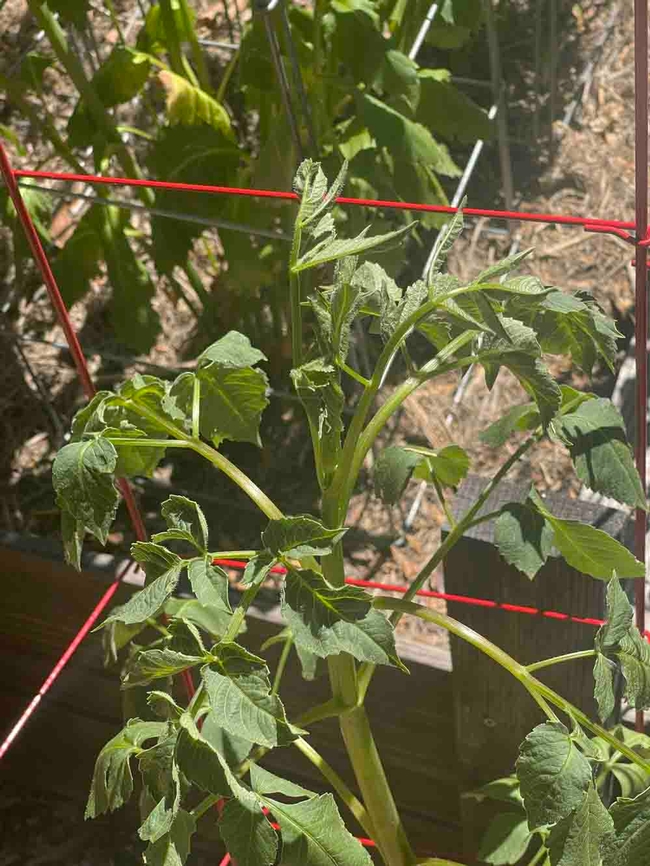
When it's hot and windy and the soil is dry, plants can experience wilt and leaf scorch. Wilt is the earliest and most noticeable signal of heat-related problems. Extreme solar radiation quickens it. Wilt is initially observed when leaves or tender new growth droops, curls, or twists unnaturally. Eventually an entire plant can look limp, a sign of extreme plant stress.
Leaf scorch appears as browned leaf margins that eventually become tissue-paper thin. When whole sections of plants display leaf scorch, it's easy to be misled into thinking that the plant is dying.
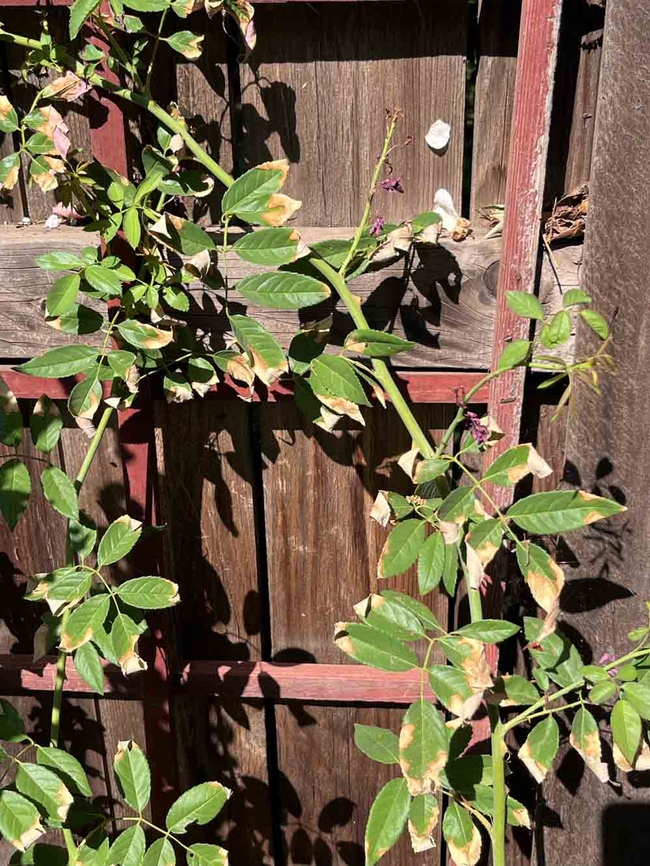
There are a few things that can be done immediately to address these heat-related issues when you notice them. A close examination of a specific plant's parts and its surrounding environment is essential. A "bottom-to-top-to-outside" strategy is recommended, meaning that you should address stressed root zones first, then the overheated plants, and finally the superheated environment around and above the plants.
Lack of water is the most likely critical factor in extreme heat-related garden problems. The higher the temperature, with increased sunshine intensity or drying winds, the faster water evaporates, leaves transpire, and the soil dries. Watering not only hydrates roots but cools them as well. Remember this point because the initial water in a hose that has been left in the sun might be scalding hot. While we do not advocate wasting water, in this case it is best to run water through the hose until the water is cool. You should have a few buckets near your faucets to collect the hot water to use later on when it has cooled.
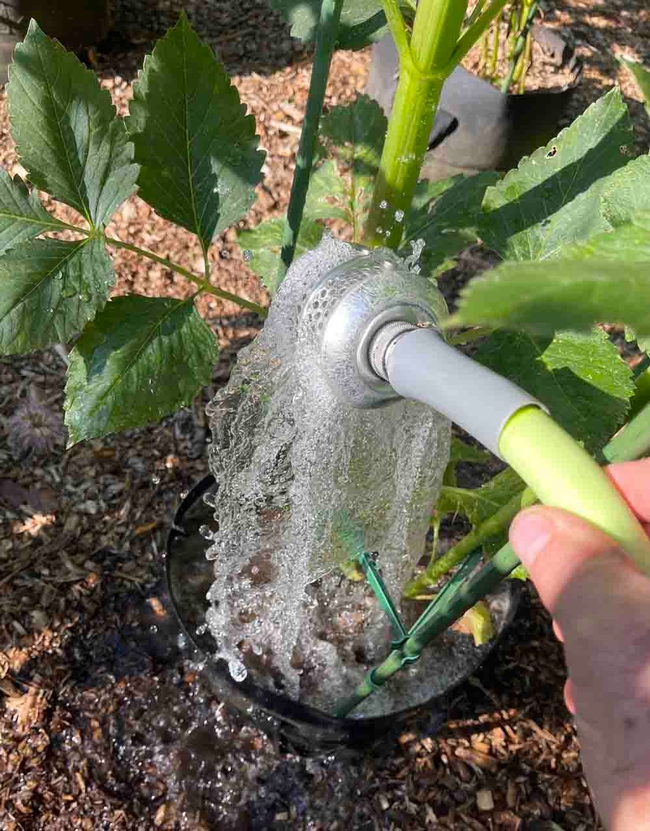
Potted plants require even more attention. Watering them two or more times a day might be necessary. When a potted plant is very stressed, try submerging it in a larger tub filled with cool water to re-wet the soil. Leave it in it until all the bubbling stops, then remove it, let the excess water slowly drain out, and place the plant in the shade.
Remove all weeds around your plants because they are competing for water. In addition to sucking up valuable moisture, weeds steal critical nutrients that your plants require. For example, research shows that calcium helps protect plants from heat stress. Be diligent about removing weeds, grasses, and even seedlings if they're suspected of drawing up too much water from their mother plant.
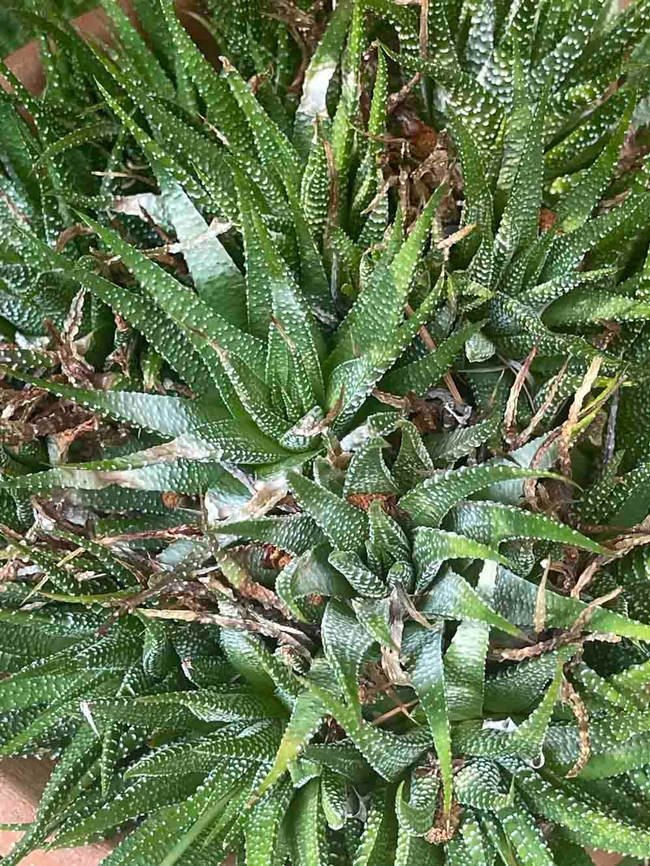
While you're mulching, check for suckers around trunks or from root shoots. While seasonal pruning should be avoided during high heat spells, removing suckers will reserve water for the original plant. Also, refrain from removing unsightly scorched leaves; portions might still be photosynthesizing and shading stems or new growth at the leaf axils. Remember: don't immediately equate burned leaves to a dead or dying plant. Give it time to recover before removing it.
Now that you've addressed the root and plant issues, move on to the environment around and above the plant. One strategy here is to mist the plant, though this is not a replacement for direct watering. Misting helps reduce air temperature and physically cools leaves. When partnered with shading strategies, mist becomes very helpful in locally reducing extreme heat. It is recommended to mist mid-day to early afternoon, allowing moisture to dry before dusk. Excessive moisture on leaves in the evenings can promote unwanted pests and fungus. Many commercial misting systems have timers and attachments to help you create an overhead system that is best for you and your garden. If you don't want to invest in a misting system, periodic mid-day spraying from a cool garden hose can work wonders to perk up limp, stressed plants. One key consideration about misting is to hand water the stressed plant first to revive it before doing any misting. If you hand mist first, the weight and pressure of the water on a heat-weakened plant might snap off new growth.
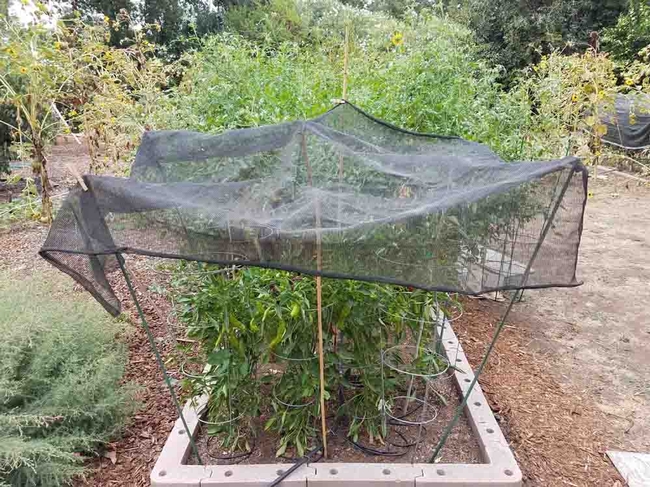
It is also important to reduce exposure to the light and heat reflected off buildings, concrete hardscaping, and even gravel walkways. Again, applying shade above plants will reduce the problem, but hanging a dark cloth or tarp on a building's walls or temporarily putting mulch onto concrete or other hardscaping can further reduce issues brought on by reflective heat and light conditions.
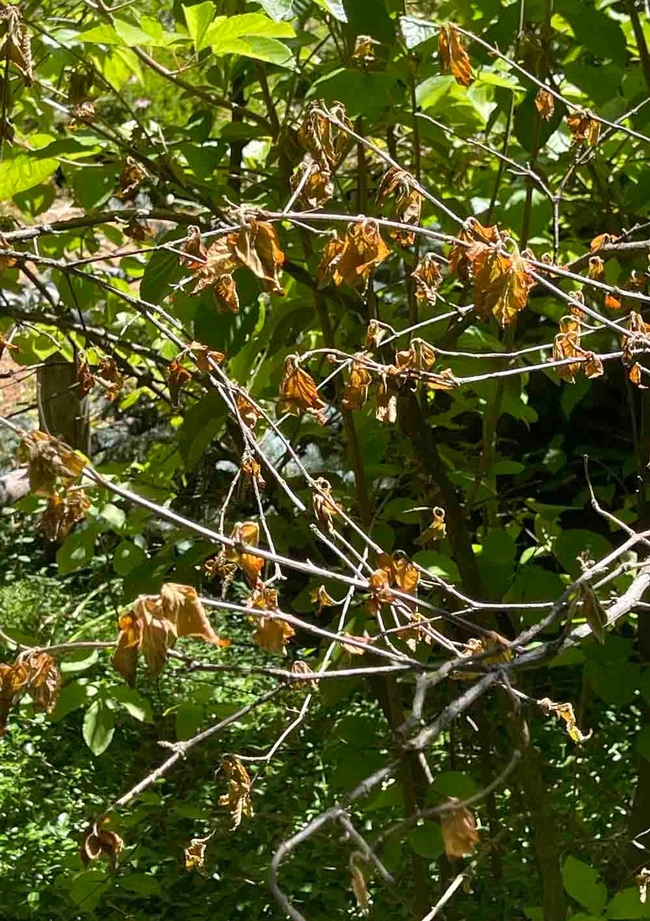
Lawns can also suffer during extreme heat events. Watering schedules should be set for early morning, with increased frequency (number of days) and extended watering times. Longer watering periods help grass roots grow deeper into cooler soil, creating increased resilience to extreme heat. A good test to see if a lawn is receiving enough water is observing the grass blades after walking across the lawn: if they bounce back, the lawn is well watered. If they remain bent, the lawn is too dry. Let grass grow longer between mowings (set mower up an inch or more), and never fertilize in the summer months.
Finally, observe the changing areas of light and shade in your garden throughout the year. Note areas that are sunny, those that have morning sun and afternoon shade, those with all-day filtered sunlight, and those with deep shade. Take note of places where reflective light and heat might originate. Determine how wind generally moves through your garden. Take pictures every month from the same vantage points at different times of the day. Your mission is to track the movements of sun and shadow on your garden. Make sure to photograph plants damaged by extreme heat. These aren't beauty shots. You can use this information for future long-term extreme heat mitigation strategies.
Extreme heat conditions are tough on the garden. Incorporating these recommendations shouldn't add too much work to your current garden activities. You'll be happy knowing that you helped your plants survive another summer. And remember to use a good sunscreen and wear a hat when out in the garden yourself.
UC Master Gardeners of Butte County are part of the University of California Cooperative Extension (UCCE) system. To learn more about us and our upcoming events, and for help with gardening in our area visit our website. If you have a gardening question or problem, email the Hotline at mgbutte@ucanr.edu or leave a phone message on our Hotline at 530-552-5812. To speak to a Master Gardener about a gardening issue, or to drop by the MG office during Hotline hours, see the most current information on our Ask Us section of our website.